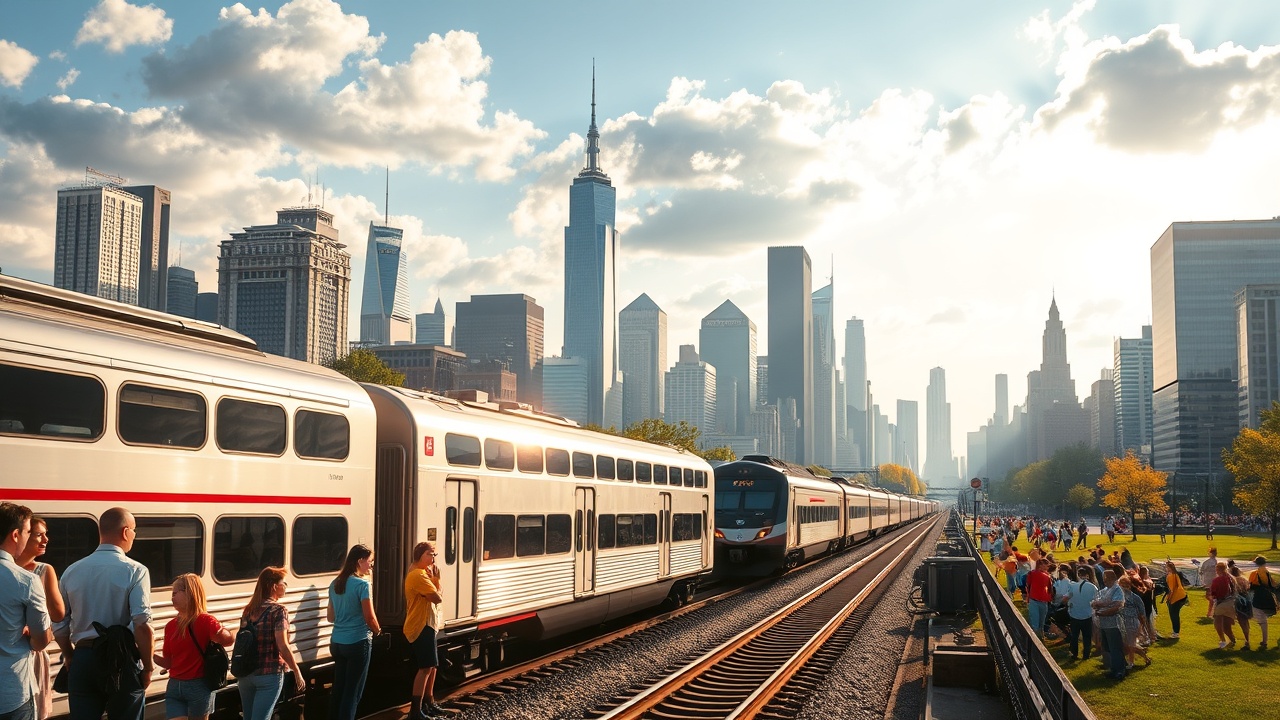Introduction
As preparations for the upcoming 2026 FIFA World Cup unfold, cities in the Northeast including Boston, New York/New Jersey, and Philadelphia are collaborating to present a unified travel experience for attendees. A major component of this initiative is the Amtrak rail system, which connects these areas along the busy Northeast Corridor. However, analysts express concerns regarding Amtrak’s ability to manage the anticipated influx of visitors during the tournament’s peak events.
Rail Demand and Capacity Challenges
With the World Cup kicking off in June 2026, the projected demand on rail services is staggering. Jim Mathews, the president and CEO of the Rail Passengers Association, highlighted the potential strain on an already overloaded system, stating:
“You’re going to add millions of people into that mix for a short period of time, and it’s really going to crush capacity.”
Currently, the Northeast Corridor is the most-trafficked rail route in the United States, handling around 750,000 passengers daily on approximately 2,200 trains that traverse 457 miles from Boston to Washington, D.C. The infrastructure is aging, featuring 17 tunnels and over 1,100 bridges, some of which are over a century old. Despite Amtrak’s management of the majority of this corridor, reliability issues plague the service, with expected delays and cancellations becoming common.
Amtrak’s Response
Amtrak has acknowledged these difficulties, revealing a decrease in service reliability and noting that nearly 10% of their trains faced delays or cancellations recently. Significant disruptions were also noted last summer due to equipment failures exacerbated by heat, leading to widespread delays. In response, Amtrak is determined to make improvements, undertaking repairs and enhancements in preparation for elevated demand during the World Cup.
World Cup Expectations
The FIFA World Cup is anticipated to attract roughly 6.5 million attendees across the United States, Canada, and Mexico, with matches held at multiple venues in the Northeast. Three stadiums in this region will host 21 games over a five-week period, culminating in the final match in New Jersey on July 19. Local organizers are optimistic about Amtrak’s capacity to facilitate match-day travel for fans, who may also wish to explore nearby cities, such as Washington, D.C. and Baltimore.
Statements from Local Organizers
“Amtrak will be incredibly important to visitors from regions where train travel is not only common but often more efficient than car transport,” asserted Alex Lasry, CEO of the New York/New Jersey host committee. Lasry views Amtrak as a vital partner in ensuring a seamless travel experience for attendees, likening their role in the event to their participation in past major gatherings, such as the Super Bowl.
Meg Kane, the CEO of the Philadelphia host committee, echoed this sentiment, emphasizing ongoing collaboration with federal and state agencies to address transportation bottlenecks, aspiring to deliver an exemplary experience for all World Cup visitors. Meanwhile, Mike Loynd, the leader of FIFA World Cup Boston 2026, warned that unprecedented levels of service will be necessary to accommodate the thousands expected to descend on the Boston area for matches held at Gillette Stadium.
Long-term Sustainability Concerns
Concerns also linger regarding the long-term sustainability of Amtrak’s services. Analysts like Yonah Freemark from the Urban Institute underscore the challenges posed by an underfunded rail infrastructure and outdated equipment, suggesting that increased capacity through additional or longer trains will be essential as demands grow. Recent investments promise a more modern fleet, but questions remain about their readiness and deployment before the tournament.
Conclusion
Amid these logistical challenges and widespread investment debates, both local organizers and Amtrak remain committed to ensuring the World Cup serves as a showcase of both regional hospitality and rail transportation capabilities. The hope is that with proactive planning and strategic upgrades to the Northeast Corridor, locals and visitors alike will benefit from efficient rail service amid the excitement of one of soccer’s premier events.




